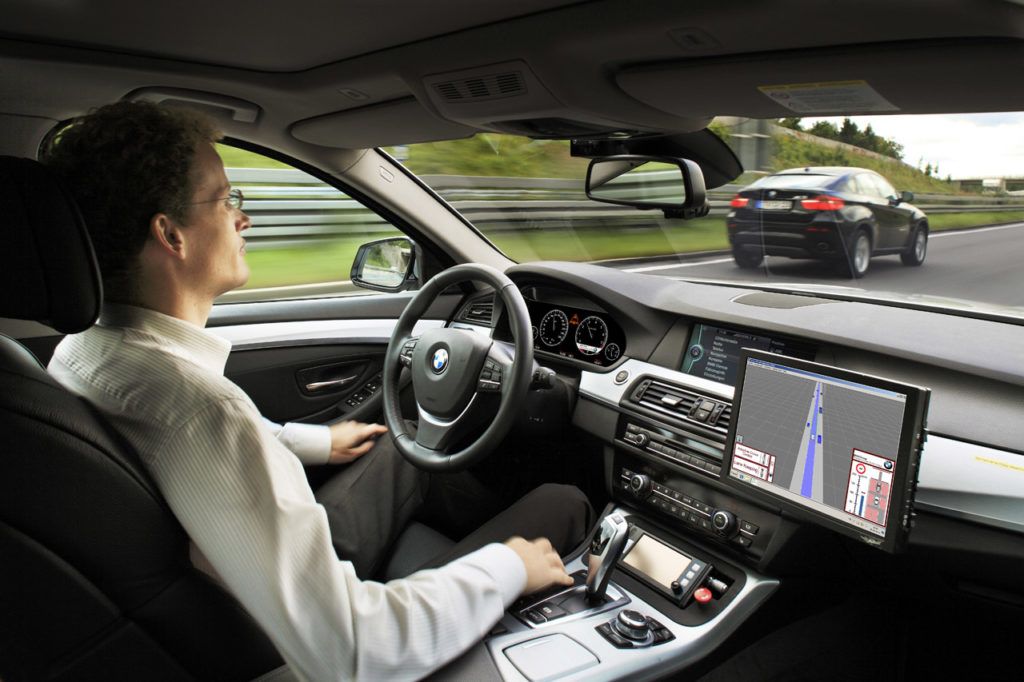The UK government has today announced that Level 3 automated vehicles will become legal on the nation’s roads later this year.
The Department for Transport (DfT) has set out the parameters within which automatic lane-keeping systems (ALKS) must operate to allow a driver to legally take his attention from the road and perform a completely different, non-driving-related task while at the wheel – classed as Level 3 automation.
Currently, several high-end automobile models already include lane-keeping assistance technology (Tesla’s AutoPilot technology being a well-known example of this kind of system), however they require a driver to sit with his hands hovering over the wheel, ready to take over at a split second’s notice, should he spot a potentially dangerous situation – because, legally, the driver is always fully responsible for the vehicle (Level 2 automation).
The proposed new law marks what will undoubtedly the first in many steps away from full driver responsibility – stipulating that a driver will be legally allowed to completely take their attention from the road, so long as the ALKS can give the driver adequate warning (around 10 seconds) of when they need to retake control. If they do not retake control the vehicle, it must automatically activate its hazard lights and gradually slow down until eventually it comes to a safe stop.

Initially the new law on ALKS will only apply at speeds of up to 37mph – it’s primary use being foreseen as for moving slowly in jams on multi-lane highways – but there is an expectation that this speed limit will increase as the technology proves itself.
The proposed new law comes after extensive research into ALKS which the government conducted, the findings of which have now been published. The Department for Transport also it worked alongside the Transport Research Laboratory (TRL), to create a further report on the tasks a driver might safely perform while ALKS is enabled.
The proposed new law has created many new challenges for the transportation industry, including finding the answers to new questions, such as as what kind of standards will need to be maintained for road markings? Who will be responsible in the event of an accident while ALKS is enabled? And how will fault be established? These questions and many more will be explored in depth by leading industry experts at TTI’s forthcoming UK CAV Infrastructure Symposium in London, October 4-5.
There is also a proposed change to the Highway Code to reflect the new laws. This change differentiates between “assisted driving features (like cruise control and lane-keeping assistance)”, which require the driver to remain in control, and automated vehicles.
It reads: “Automated vehicles are vehicles that are listed by the Secretary of State for Transport. While an automated vehicle is driving itself, you are not responsible for how it drives, and you do not need to pay attention to the road. But you must follow the manufacturer’s instructions about when it is appropriate to engage the self-driving function.
“If the vehicle is designed to require you to resume driving after being prompted to, while the vehicle is driving itself, you MUST remain in a position to be able to take control. For example, you should not move out of the driving seat. You should not be so distracted that you cannot take back control when prompted by the vehicle.”
“This is a major step for the safe use of self-driving vehicles in the UK, making future journeys greener, easier and more reliable while also helping the nation to build back better,” says Transport Minister Rachel Maclean. “But we must ensure that this exciting new tech is deployed safely, which is why we are consulting on what the rules to enable this should look like. In doing so, we can improve transport for all, securing the UK’s place as a global science superpower.






